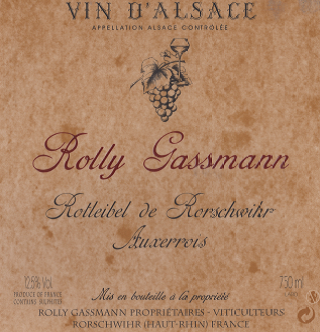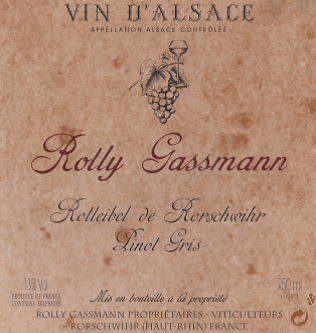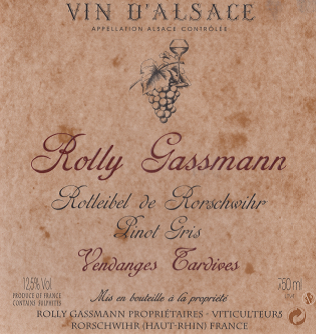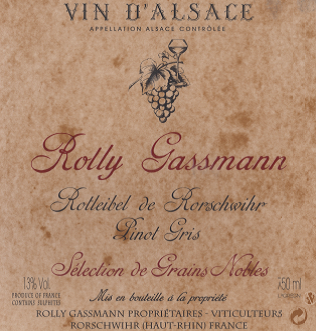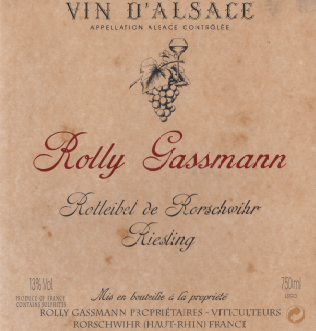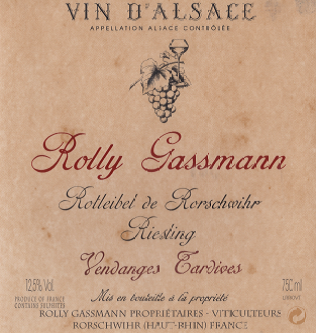WINE INFORMATION
COLOR : White
DISTRIBUTION OF VARIETIES AND / OR BLENDINGS PLANT ON THE TERROIR :Pinto Grey 42%, Auxerrois 50%, Riesling 8%
READY TO DRINK : 3 – 12 years
FOOD AND WINE PAIRING:
AUXERROIS :Tarte flambée, pizzas, pies, pork, poultry …
PINOT GREY : tomato salad, vegetarian dishes, veal, snail casserole, lamb, creamy sauce base, mushrooms, lacquered meats, offal …
LATE HARVEST PINOT GRIS : duck foie gras, mirabelle plum tart, pineapple, candied fruit, dried fruit, cooked cheese (Comté …) …
ABOUT THE PLACE-DIT
The Provincial Court of “ROTHWEIL” could well, by deformation, have given birth to the name of Rotleibel.This locality was claimed and developed by the Silo de Sélestat and the Abbaye de Moyen-moutier. It should be noted that the Colongère court of Meyerhof had works carried out there as a penalty. The first sale of this vintage under the name “Rotleibel” dates back to 1348. As for the grape varieties, we mainly find Auxerrois, Pinot Gris as well as Pinot Noir, Gewurztraminer and Riesling; it is above all the Pinots that like it wonderfully. Completely anecdotally, it should be noted that it is marketed and claimed on various harvest declarations (see the 300 harvest declarations of Rorschwihr) which mention the 12 localities. It should be noted that Rorschwihr only has 5 handlers, 2 of whom do not have vines in the 12 localities of the Municipality, the other winegrowers being either cooperators or vendors of grapes).








